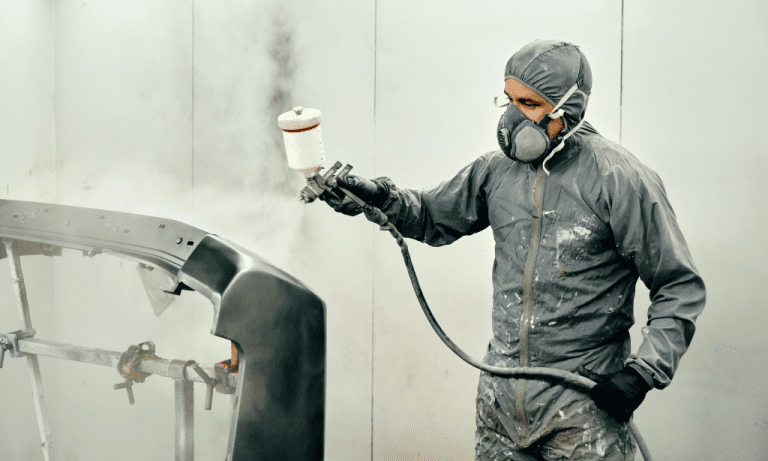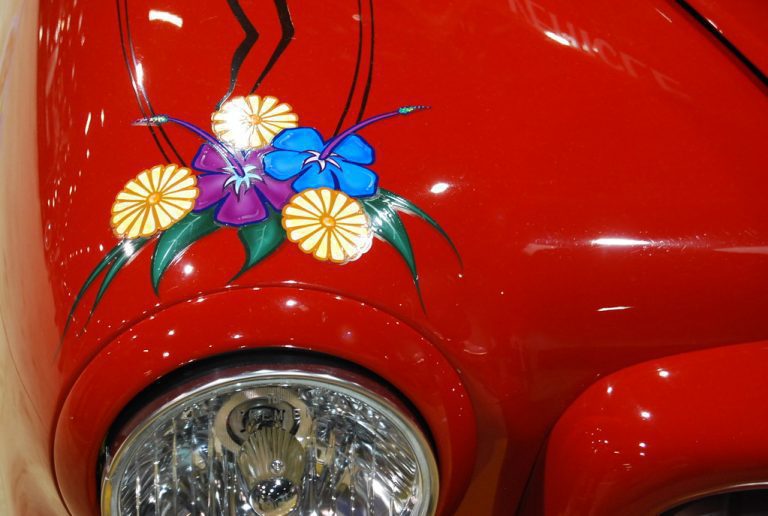Common Problems With Tamco Paint: Troubleshooting Tips and Solutions
Common problems with tamco paint include adhesion issues and color matching inconsistencies. Tamco paint may not adhere properly to the surface, leading to peeling or chipping.
Additionally, color matching can be challenging as the shade may not match exactly with the desired color. Tamco paint users may encounter a few common challenges that can affect the final result of their projects. These issues primarily involve adhesion and color matching.
Poor adhesion can lead to paint peeling or chipping, rendering the finish unsatisfactory. Similarly, the color matching process may bring about inconsistencies, making it difficult to achieve an exact match to the desired color. It is important for users to be aware of these common problems and take appropriate measures to ensure a successful paint job.
Understanding The Common Problems
Identifying Common Issues With Tamco Paint
Tamco paint is known for its high-quality and durable finish, but like any other product, it is not without its common problems. Understanding these issues can help you ensure a smooth painting process and achieve the best results. Here are some common problems you might encounter with tamco paint:
- Poor adhesion: Sometimes, tamco paint may fail to adhere properly to the surface, resulting in peeling, cracking, or flaking. This can happen due to improper surface preparation, such as failing to clean and sand the surface adequately.
- Color mismatch: While tamco offers a wide range of colors, there may be instances where the color of the paint does not match your expectations or the color you selected. This can be caused by factors such as variations in application techniques or differences in lighting conditions.
- Orange peel effect: The orange peel effect refers to a textured appearance on the painted surface, resembling the skin of an orange. This can occur due to improper spraying technique, incorrect paint viscosity, or inadequate flash-off time between coats.
- Runs and sags: Excessive paint application or improper technique can result in runs and sags. These are visible as vertical streaks or drips on the painted surface. It is important to apply thin, even coats and maintain the proper distance and speed while spraying to avoid this issue.
Importance Of Recognizing And Addressing These Problems
Recognizing and addressing common problems with tamco paint is crucial to ensure a successful painting project. Here’s why it’s important to be aware of these issues:
- Time and cost-saving: By identifying the problems early on, you can address them promptly, saving time and money that would otherwise be wasted on correcting mistakes or redoing the entire paint job.
- Professional finish: Addressing the common problems allows you to achieve a professional and flawless finish. By troubleshooting these issues, you can eliminate imperfections and ensure a smooth and even application of the paint.
- Customer satisfaction: Whether you are a professional painter or a diy enthusiast, customer satisfaction is paramount. By recognizing and resolving these issues, you can ensure that your clients or yourself are happy with the end result, enhancing your reputation as a skilled painter.
How To Effectively Troubleshoot Paint-Related Issues
Troubleshooting paint-related issues requires a systematic approach and attention to detail. Here are some steps you can take to effectively troubleshoot common problems with tamco paint:
- Surface preparation: Ensure that the surface is clean, dry, and free from any contaminants before applying the paint. Properly sand the surface and use appropriate primers if necessary.
- Follow the manufacturer’s instructions: Read and follow the product instructions provided by tamco. This includes recommendations for mixing ratios, application techniques, and drying times.
- Test spray: Before starting the actual painting, it is advisable to perform a test spray on a small inconspicuous area. This will help you identify any potential issues and make necessary adjustments before proceeding with the entire project.
- Adjust application technique: If you notice issues such as orange peel effect, runs, or sags, adjust your spraying technique accordingly. Ensure that you maintain the proper distance, speed, and overlap between passes while spraying.
- Seek professional advice: If you are unable to troubleshoot the issue on your own, do not hesitate to seek advice from professionals or the technical support team at tamco. They can provide valuable insights and guidance specific to your situation.
By understanding the common problems with tamco paint, recognizing their importance, and adopting effective troubleshooting techniques, you can overcome these challenges and achieve outstanding results in your painting projects. Remember, preparation, attention to detail, and perseverance are key to a successful paint job.
Solutions And Tips For Troubleshooting
Tamco paint is a popular choice for many diy enthusiasts and professional painters alike. However, like any paint product, it is not without its fair share of challenges. In this section, we will explore some common problems that users may encounter with tamco paint and provide effective solutions and troubleshooting tips to address them.
Whether you’re dealing with adhesion issues, color matching problems, texture concerns, drying and curing problems, paint runs and sags, or bubbling and blistering, we’ve got you covered. So let’s dive in and discover how to overcome these hurdles and achieve a flawless paint finish.
Maintenance And Prevention
Importance Of Regular Paint Maintenance
Regular maintenance of your tamco paint is essential for maintaining its appearance and longevity. By dedicating some time and effort, you can easily avoid common paint problems and ensure your paint job stays flawless for years to come. Here are a few key reasons why regular paint maintenance is important:
- Sustaining color vibrancy: Over time, exposure to sunlight, environmental elements, and everyday wear and tear can cause your paint to fade or lose its original color. Regular maintenance helps to preserve the vibrancy and richness of your paint, keeping your surfaces looking fresh and vibrant.
- Protecting against damage: Paint acts as a protective barrier for your surfaces, shielding them from moisture, dirt, and other damaging substances. By regularly inspecting and maintaining your paint, you can identify any areas that may be susceptible to damage and address them promptly.
- Enhancing durability: Just like any other surface, paint undergoes normal wear and tear. By regularly cleaning and maintaining your paint, you can prevent or minimize issues such as peeling, cracking, or chipping, ensuring the longevity of your paint job.
Tips For Preventing Common Paint Problems
Prevention is always better than cure, and when it comes to paint problems, a proactive approach can save you time, money, and frustration. By following these simple tips, you can prevent common paint problems and keep your tamco paint looking its best:
- Keep surfaces clean: Regularly clean your painted surfaces using a mild detergent and a soft cloth or sponge. This helps to remove dirt, debris, and pollutants that can gradually deteriorate your paint.
- Avoid harsh chemicals: Harsh chemicals and cleaning agents can strip away the protective coating of your paint or cause discoloration. Opt for gentle cleaning solutions specifically designed for painted surfaces.
- Protect against moisture: Moisture is one of the biggest enemies of paint. Ensure proper ventilation in areas prone to humidity, such as bathrooms and kitchens, and promptly fix any leaks to prevent moisture accumulation.
- Touch up as needed: Inspect your paint regularly and address any minor damages such as scratches, nicks, or small chips. By addressing these issues promptly, you can prevent them from worsening and avoid the need for more extensive repairs down the line.
Best Practices For Long-Term Paint Durability
If you’re looking to maximize the durability of your tamco paint and ensure it stands the test of time, consider incorporating these best practices:
- Use high-quality paint: Invest in high-quality paint products that are specifically formulated for your intended surfaces. Quality paint often provides better adhesion, durability, and resistance to fading.
- Prepare surfaces properly: Before applying paint, ensure that surfaces are properly cleaned, repaired, and primed. This helps promote better paint adhesion and minimizes the risk of paint problems.
- Apply multiple coats: Applying multiple coats of paint provides a stronger protective barrier and increases the longevity of your paint job. Follow the manufacturer’s recommendations for the number of coats needed for optimal coverage and durability.
- Schedule regular inspections: Make it a habit to inspect your painted surfaces periodically, checking for any signs of damage or wear. By catching issues early on, you can address them promptly and prevent further damage.
By regularly maintaining your tamco paint and following these prevention tips and best practices, you can ensure that your paint remains vibrant, protected, and durable for years to come. So, take the necessary steps today to keep your paint looking its best tomorrow
Conclusion
It is essential to be aware of the common problems encountered with tamco paint. The information provided here gives you a comprehensive understanding of these issues and their potential solutions. By knowing about problems such as poor adhesion, color inconsistency, and limited availability, you can take appropriate steps to address them effectively.
Remember to thoroughly inspect the paint before application, follow the manufacturer’s instructions, and ensure the surface is properly prepared. Additionally, consider exploring alternative paint brands that offer better consistency and availability. Taking these precautions will help you achieve the desired results while minimizing any potential setbacks.
If you experience any persistent issues, consult with professionals or tamco customer support to find tailored solutions. By being proactive and informed, you can avoid frustration and achieve a successful painting project.
- How To Expertly Attach Patches To Headliner: Master the Process - October 3, 2023
- Can You Safely Clear Coat Your Polished Aluminum for Ultimate Shine? - October 3, 2023
- Will A Raptor Grill Fit An F150? Unveiling the Perfect Customization Option - October 3, 2023




